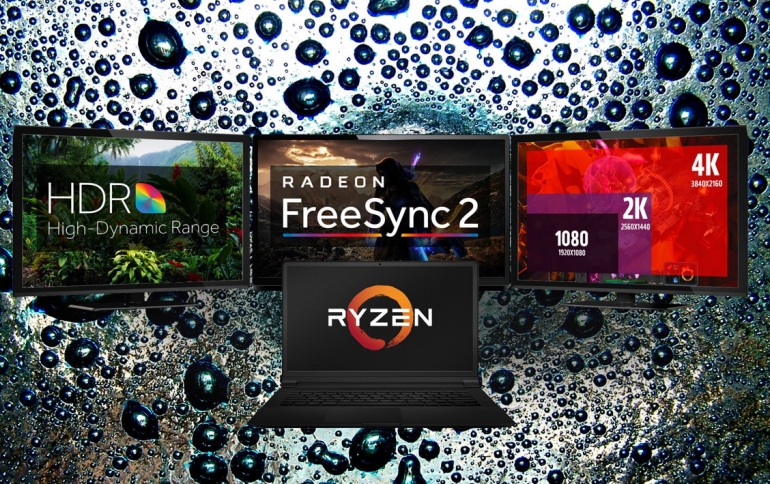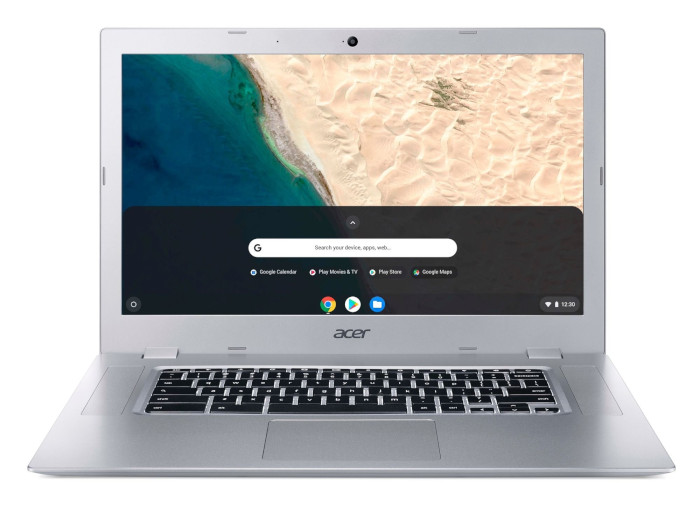
AMD Kicks-Off CES 2019 Wth Mobile Portfolio: New Ryzen, Athlon, and A-Series Processors for Ultrathin, Mainstream, and Chromebook Laptops
AMD on Sunday announced the first members of its 2019 mobility line-up encompassing all notebook segments: 2nd Gen AMD Ryzen 3000 Series Mobile Processors for ultrathin and gaming notebooks; AMD Athlon 300 Series Mobile Processors powering mainstream notebooks with the “Zen” core; and optimized 7th Gen AMD A-Series processors for mainstream Chromebooks.
In addition, AMD announced that starting this quarter, gamers, creators and enthusiasts will be able to install Radeon Software Adrenalin software to bring the latest GPU features and game optimizations to all systems powered by AMD Ryzen Processors with Radeon Graphics.
Built on 12nm manufacturing technology, new AMD Ryzen 3000 Series Mobile Processors deliver:
- entertaining features like Wake on Voice, Modern Standby, smooth PC gaming, and is 4K HDR Streaming-capable
- up to 10 hours of video playback battery life
- AMD claims that the Ryzen 7 3700U can edit media up to 29% faster than the Intel Core i7-8550U, and the AMD Ryzen 5 3500U can load websites up to 14% faster than the Intel Core i5-8250U
The first 2nd Gen Ryzen mobile powered notebooks will be available in Q1, with more systems expected to launch throughout 2019. These new notebooks will be coming through Acer, ASUS, Dell, HP, Huawei, Lenovo, and Samsung this year.
Starting in Q1 2019, AMD plans to provide regular Radeon Software Adrenalin updates for all Ryzen Processors with Radeon Vega graphics via AMD.com, enabling frequent support for new games, new features, improved performance and stability.
AMD is also offering “Zen” -based Athlon Mobile Processors bringing consumers more choice, enabling mobile computing to meet nearly any budget, slated to be available from global OEMs in early 2019.
Product Model |
Cores/ |
TDP |
Boost/Base Freq. |
Radeon Graphics |
GPU Cores |
Max GPU Freq. |
L2+L3 Cache |
AMD Ryzen 7 3750H |
4C/8T |
35W |
4.0/2.3 GHz |
Vega |
10 |
1400 MHz |
6MB |
AMD Ryzen 7 3700U |
4C/8T |
15W |
4.0/2.3 GHz |
Vega |
10 |
1400 MHz |
6MB |
AMD Ryzen 5 3550H |
4C/8T |
35W |
3.7/2.1 GHz |
Vega |
8 |
1200 MHz |
6MB |
AMD Ryzen 5 3500U |
4C/8T |
15W |
3.7/2.1 GHz |
Vega |
8 |
1200 MHz |
6MB |
AMD Ryzen 3 3300U |
4C/4T |
15W |
3.5/2.1 GHz |
Vega |
6 |
1200 MHz |
6MB |
AMD Ryzen 3 3200U |
2C/4T |
15W |
3.5/2.6 GHz |
Vega |
3 |
1200 MHz |
5MB |
AMD Athlon 300U |
2C/4T |
15W |
3.3/2.4 GHz |
Vega |
3 |
1000 MHz |
5MB |
At the top is the new Ryzen 7 3750H, a quad-core 35W processor with simultaneous mutli-threading, a 2.3 GHz base clock, a 4.0 GHz turbo frequency, 10 Vega compute units (640 SPs), a peak GPU frequency of 1400 MHz, and support for four displays. This is going to be aimed at the high-end and gaming notebook market.
The Ryzen 7 3700U is the update to the Ryzen 7 2700U, offering more frequency due to the enhanced 12nm process and Zen+ microarchitecture. Aside from being rated at 15W rather than 35W like the 3750H, the specifications for this processor are exactly the same as the 3750H.
A little bit down the stack, the Ryzen 5 3550H and 3500U are also identical to each other except from the TDP. Both processors are quad-core with eight threads, a 2.1 GHz base frequency, a 3.7 GHz turbo frequency, eight Vega compute units (512 SPs), a maximum GPU frequency of 1200 MHz, and again support for four displays.
The final three processors are more aimed at the mainstream and budget markets. The Ryzen 3 3300U is a quad-core 15W part at 2.1/3.5 GHz with six CUs, so expect this to be a common processor for mid-rangenotebooks. The Ryzen 3 3200U cuts back on the cores (two with simultaneous multi-threading), and the Vega compute units, and has slightly less L3 cache. The Athlon 300U is the first Ryzen Mobile Athlon processor, but is actually using Zen cores on 14nm.
7th Generation A-Series Processors for Google Chromebooks
The 7th Gen AMD A-Series processors are designed to power Chromebooks, offering fluid web browsing, social media, streaming and web gaming. According to AMD, the A6-9220C processor provides:
- up to 23% faster web browsing and up to 24% faster web application performance than the Intel Pentium N4200 and Celeron N3350, respectively
- up to 3.2X faster email performance and up to 74% higher office application productivity than the Intel Pentium N4200 and Celeron N3350, respectively
- 42% faster photo editing performance and up to 43% faster web gaming experiences than the Intel Pentium N4200 and Celeron N3350, respectively
Starting with the Acer Chromebook 315 and HP Chromebook 14, global OEMs are scheduled to release several AMD powered Chromebooks in 2019.
Product Model |
Cores/ |
TDP |
Boost/Base Freq. |
Radeon Graphics |
GPU Cores/Shaders |
Max GPU Freq. |
L2 Cache |
AMD A6-9220C |
2C/2T |
6W |
2.7/1.8 GHz |
R5 Series |
3 / 192 |
720 MHz |
1MB |
AMD A4-9120C |
2C/2T |
6W |
2.4/1.6 GHz |
R4 Series |
3 / 192 |
600 MHz |
1MB |
At CES 2019, Dr. Lisa Su, president and CEO, AMD is delivering a keynote address, scheduled for Wednesday, January 9 at 9:00 a.m. in the Venetian Palazzo Ballroom. Su is expected to announce the much-anticipated, high-performance 7-nanometer Navi GPUs and the rumored Ryzen 3000-series desktop CPUs.
New Chromebooks
Some of the first AMD Chromebooks will be from HP and Acer.
The HP Chromebook 14 is based on AMD’s A4-9120 SoC ant it is a fairly ordinary model for the category with a 1,366x768-resolution 14-inch display, 4GB of memory and 32GB of storage and support for Android apps from the Google Play Store. A built-in microSD card slot will keep you from running out of immediately running out of storage space.

The HP Chromebook 14 AMD models arrive in January starting at $269 and will be joined by a decidedly more premium two-in-one Chromebook for enterprise use, the x360 14 G1.
The Chromebook x360 14 G1 can be loaded with up to an eighth-gen Intel Core i7 processor, 16GB of memory and 64GB of storage, and it's built around a 14-inch 1,920x1,080-pixel touchscreen. And with a Chrome Enterprise license, the IT department can keep a whole fleet of them secure even if Steve in accounting can't be trusted not to click on every single link in his email.
Acer also expanded its line of 15.6-inch Chromebooks with its first AMD-based Chromebook, the Acer Chromebook 315. it is powered by 7th Gen AMD A6-9220C or A4-9120C processors with Radeon graphics, and offers all during a battery life of up to 10 hours.
The Acer Chromebook 315 has a Full HD 15.6-inch IPS2 display and it’s available in touch-screen and non-touch configurations (CB315-2HT/CB315-2H).

The Chromebook's HD webcam has a wide 88-degree field-of-view to accommodate groups. In addition, audio and video are crystal clear thanks to high dynamic range imaging and the built-in microphone.
The Acer Chromebook 315 has also two full-sized upward-facing speakers that flank the keyboard and support high-definition audio. It's large size means there’s also room for a full-sized, backlit keyboard on touch-screen models, and a large touchpad.
The design makes room for ample connections on the Acer Chromebook 315. There are two USB Type-C Gen 1 ports — one on each side of the devicet. It features WiFi 802.11ac wireless featuring 2x2 MIMO technology. Users can connect peripherals via Bluetooth 4.2, two USB 3.0 ports and the combo headphone and speaker jack.
The Acer Chromebook 315 weighs 1.72 kg (3.79 pounds) while measuring 380.54 W x 256.28 D x 19.95 H mm (14.98 W x 10.09 D x 0.79 H inches).
The Chromebook 315 will be available with either a touch screen display (CB315-2HT) or non-touch display (CB315-2H) with up to 8GB of RAM and 32GB of eMMC storage. The new line will be available in North America in February, starting at $279.99, and in EMEA in April, starting at €349.





















